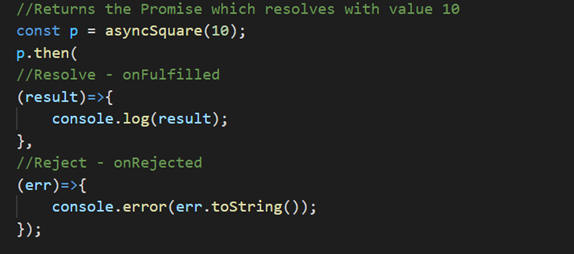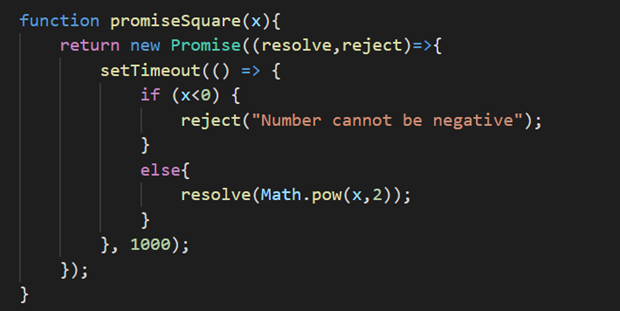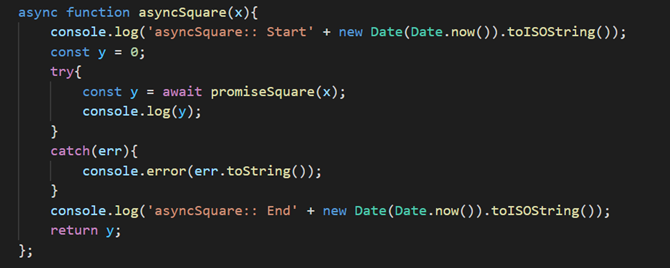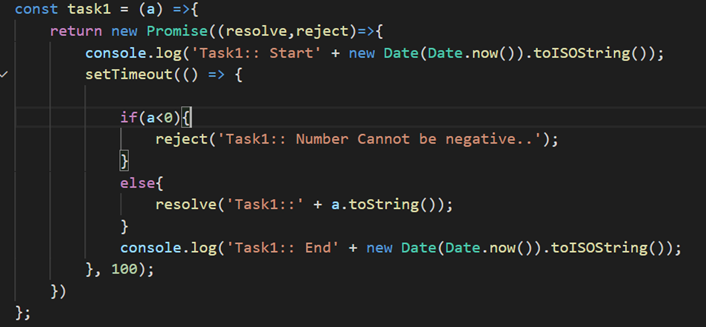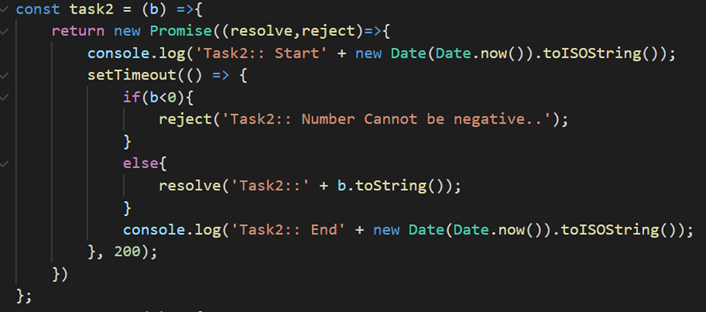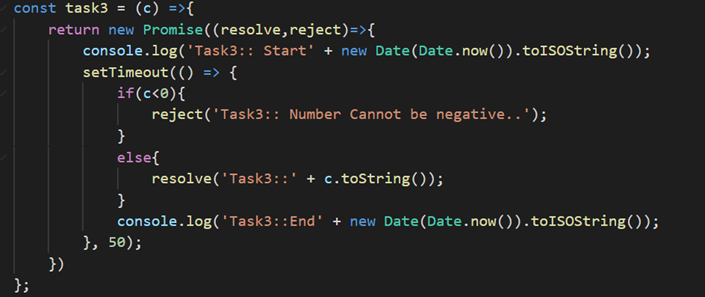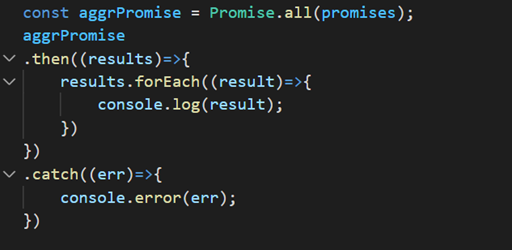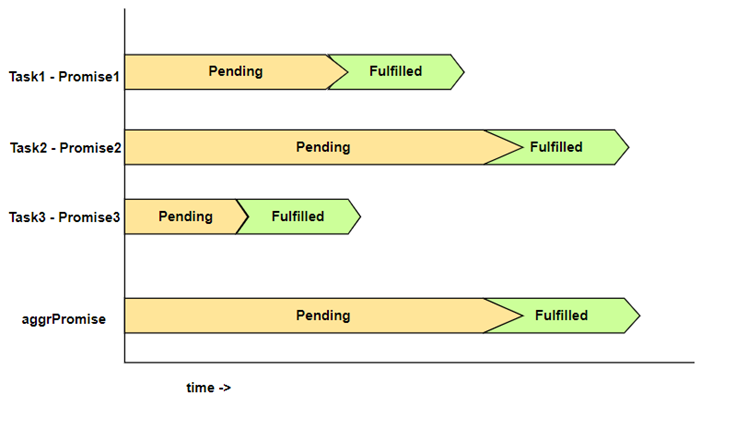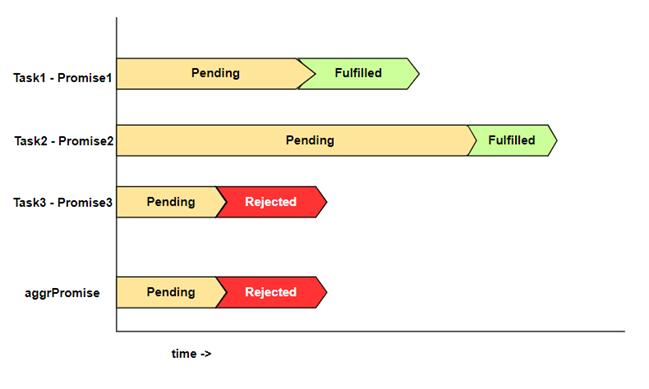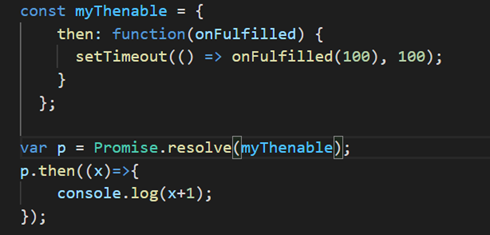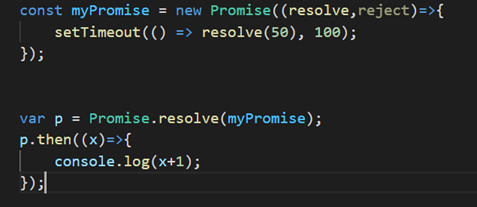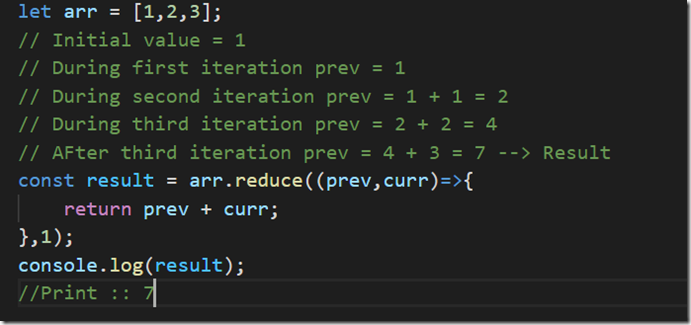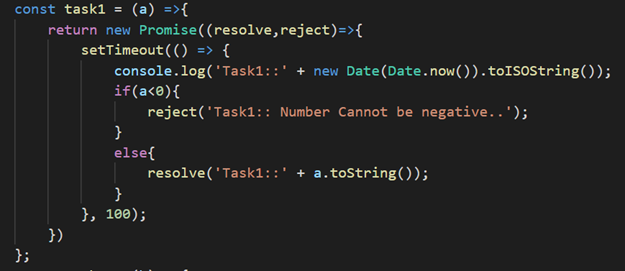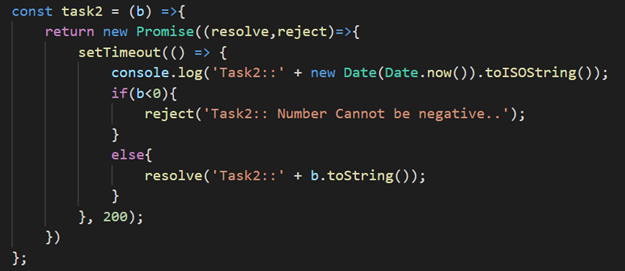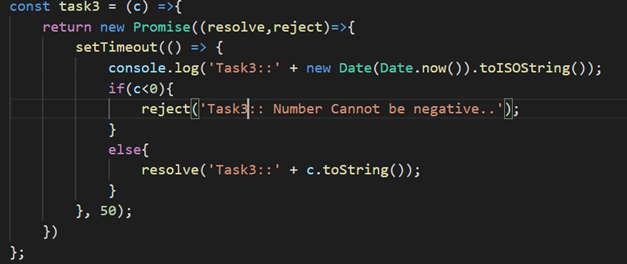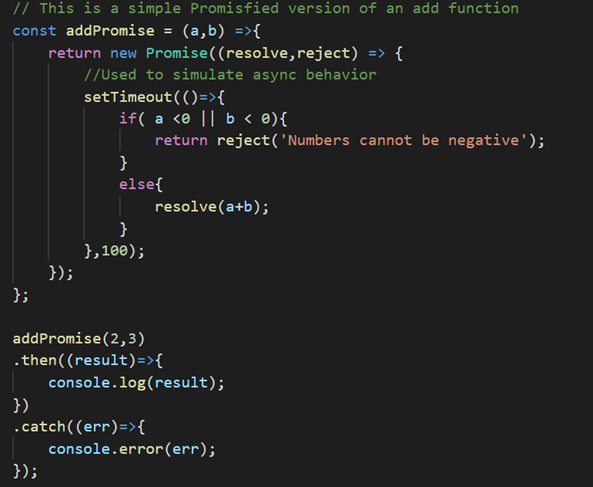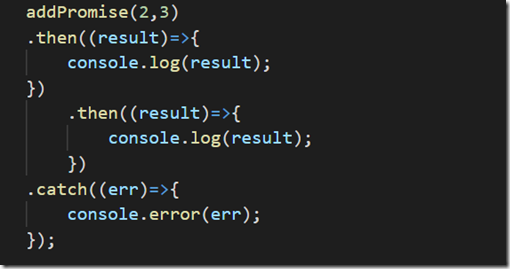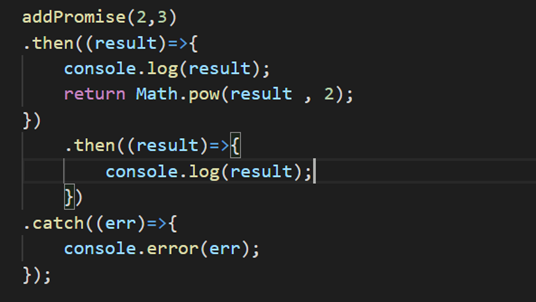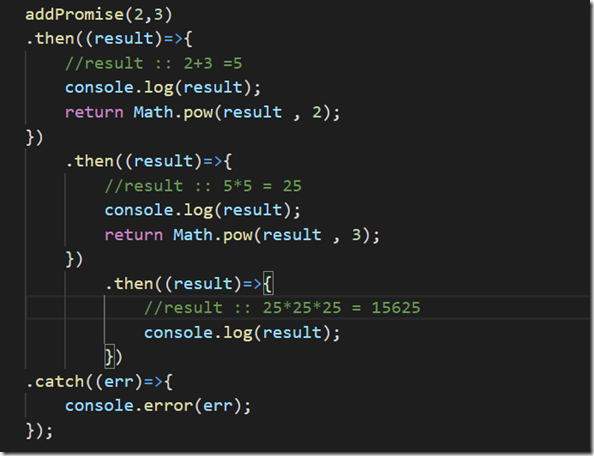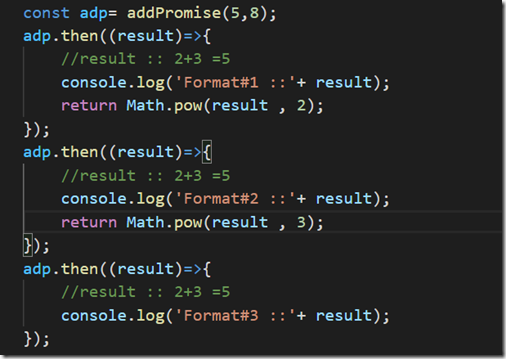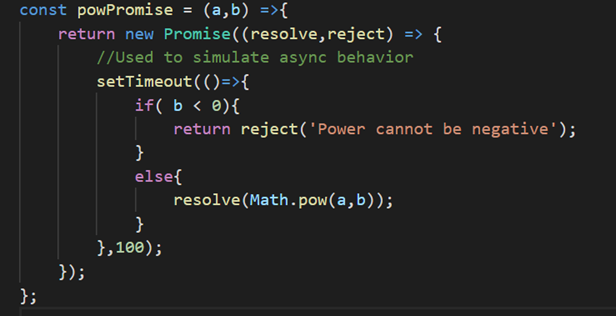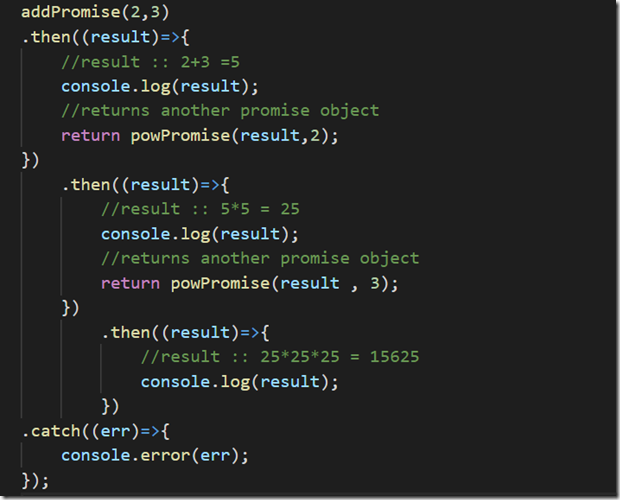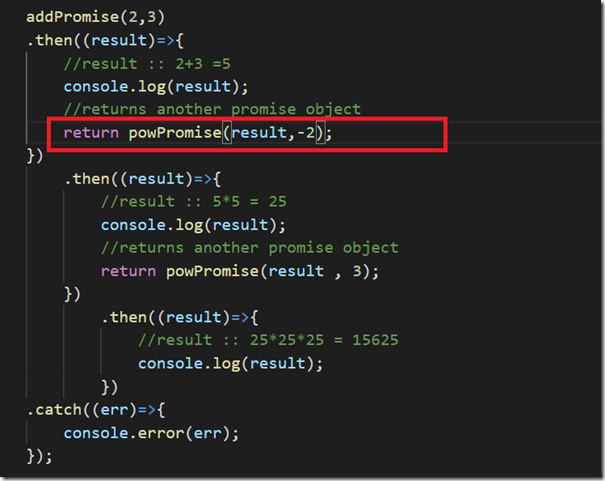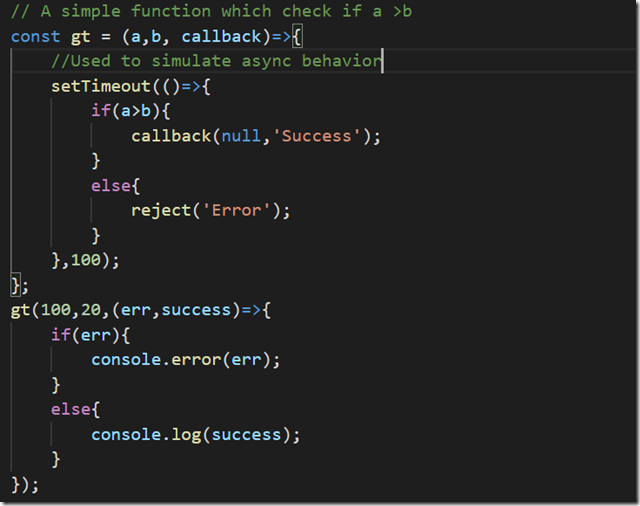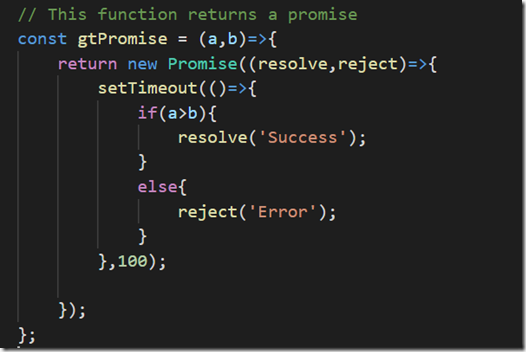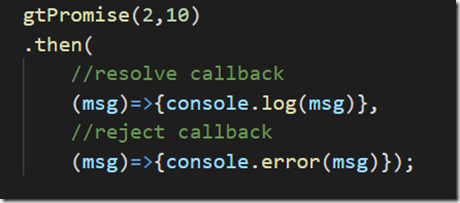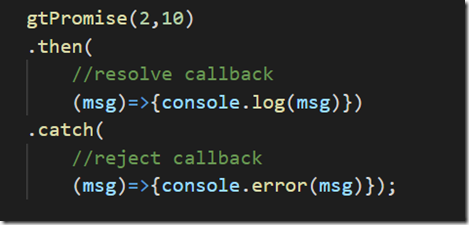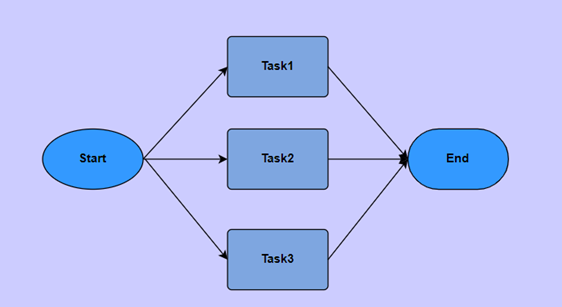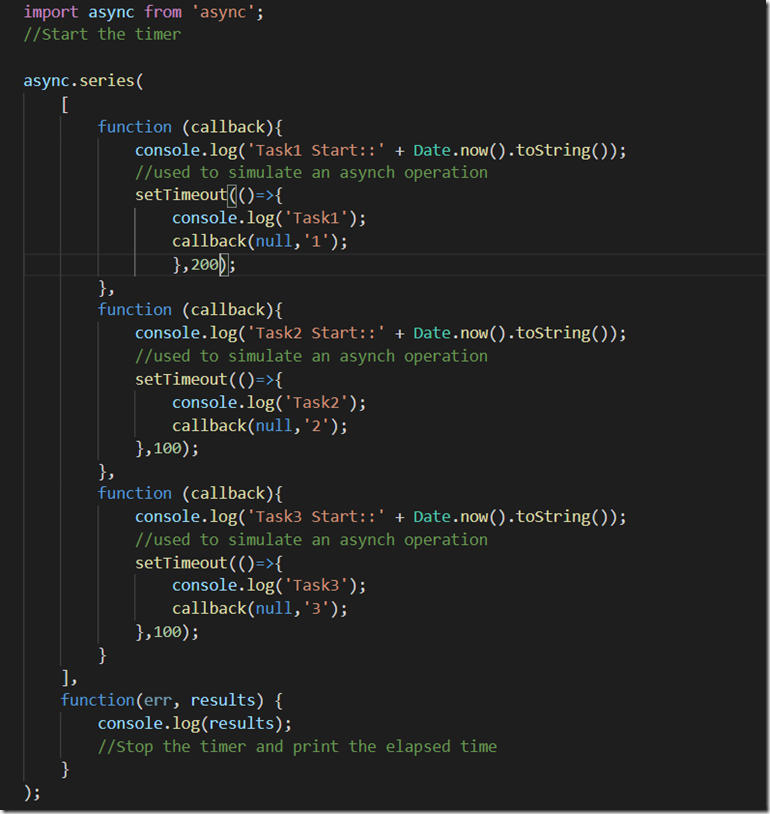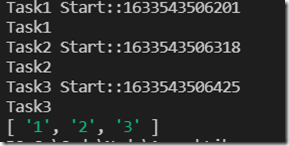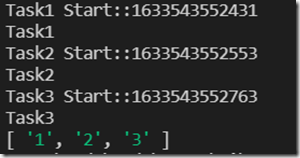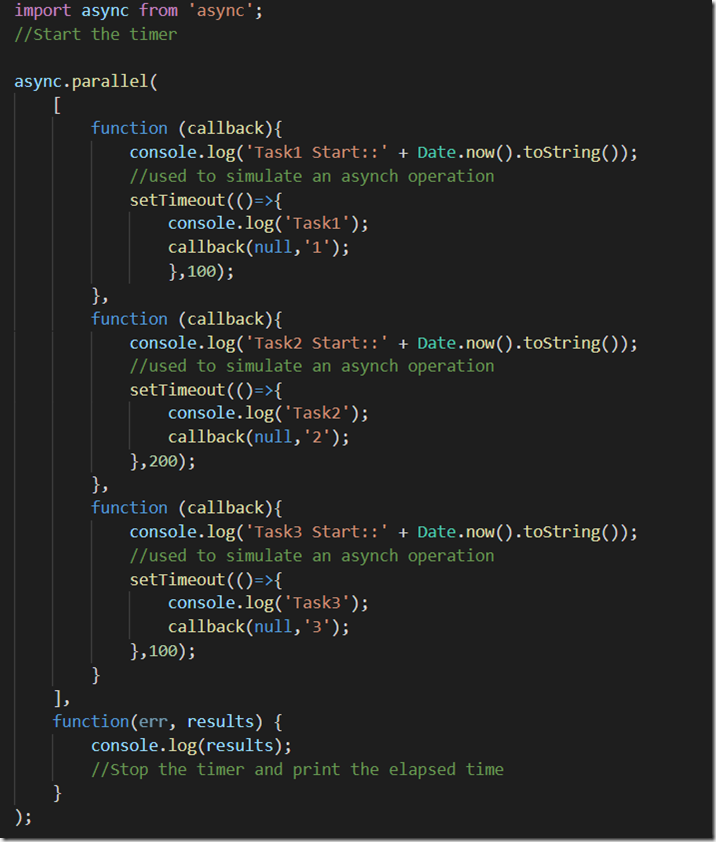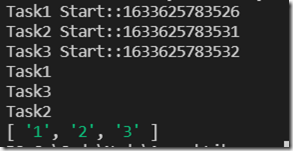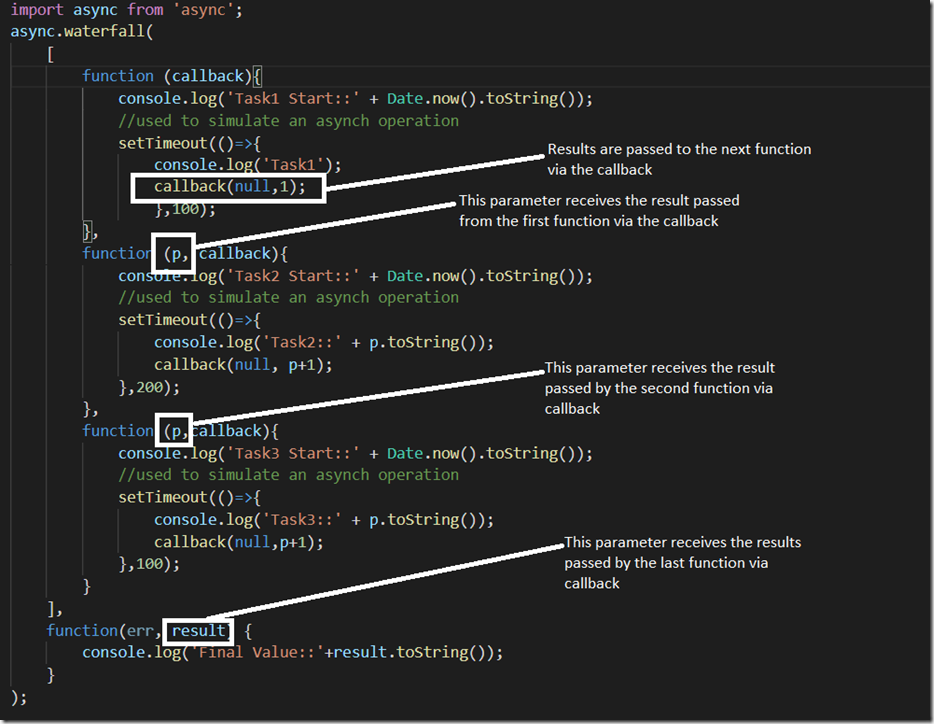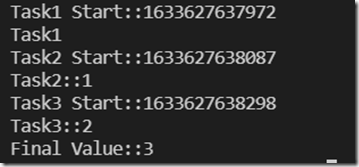In the previous few posts we have discussed on Promise in JavaScript and how it helps to solve the issues related to callbacks resulting in more readable and maintainable code.In this post we will discuss on the async and await keywords which are nothing but a syntactic sugar coat on Promise leading to a more streamlined and maintainable code.
The async functions are declared with the async keyword and await keyword is permitted within the async functions.
The async functions always returns a Promise object which will be:
- Resolved with the value returned by async function
- Rejected with the exception thrown by the async function.
We have defined a very simple async function below which returns the square of its input.
This function will return a Promise which will resolve with a square of its input value and will be rejected if the input value is negative.
The above program will have the following output:
If we pass a negative value then the Promise will be rejected as shown below.
So this async function is quite similar to the following:
Note, that using the async keyword will simplify the above code to a great extent.
The await keyword is permitted only within an async function and is used to wait on an Promise or any other value. If it’s waiting on an Promise the return value will be the fulfilled value of a Promise or any other value.
We have created a promisified version of the squared function as shown below.
We will now use await keyword and invoke this from an async function as shown below:
This code will print the following clearly indicating that await call is waiting about 1 sec for the Promise to get resolved.
If we invoke this with a negative value it will have the following output:
This is because await keyword throws the rejected value of the Promise which should be handled properly as shown below:



